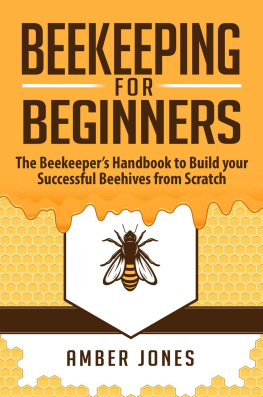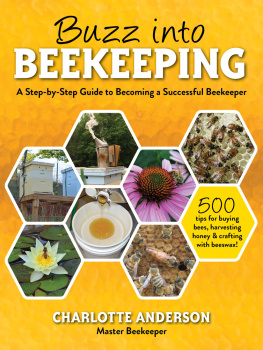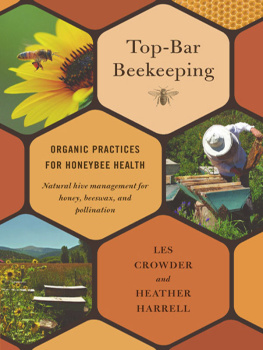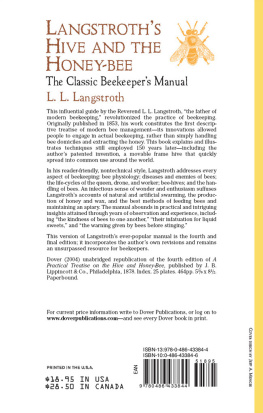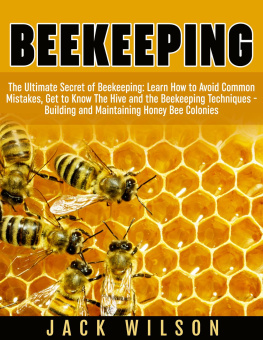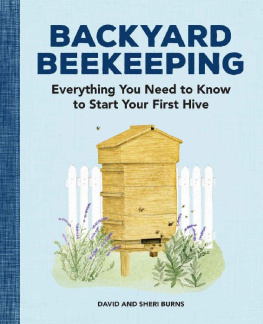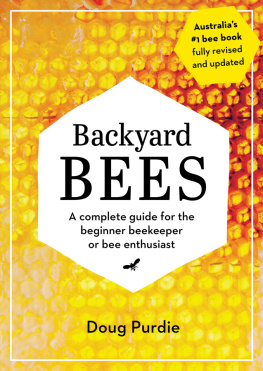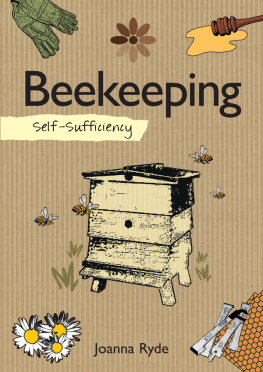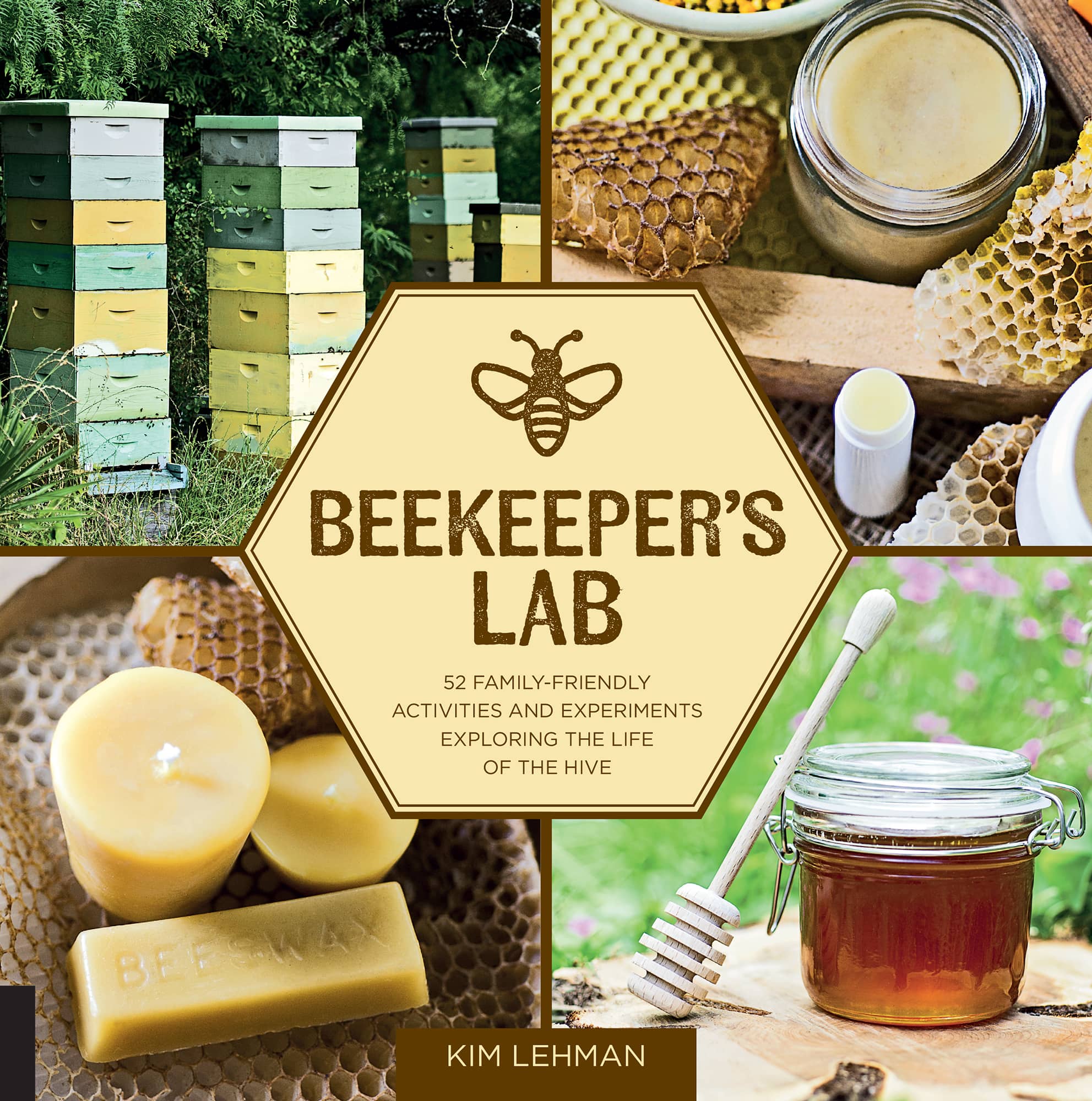I was a free-range child. Each summer my brothers, cousins, and I spent the days gallivanting around our little valley of Soap Hollow in western Pennsylvania with flower chains around our necks, mouths stained with blackberries, and bare feet in constant contact with the earth.
The delight and wonder of those days has inspired a life filled with gardening and herbs. With my deep connection to nature, it was only a matter of time before honeybees entered my world. One captured swarm was all it took to get me hooked on honeybees.
The connection between honeybees and humans goes back thousands of years. We have had generations to learn about these tiny creatures yet, even with modern technology and research capabilities, many aspects of a bees life remain a mystery. It is strangely comforting to know that bees still have secrets. Although we dont fully understand all the workings of the hive, one thing is certain: Human beings are inextricably linked to bees.
These tiny creatures help make a healthier, sweeter, and more beautiful world. Some of the most nutritious foods in our diet depend on insect pollination. Honey provides delicious treats and natural home remedies. Pollen and propolis can be made into tinctures, extracts, and healing salves. Beeswax, elegant and useful, is made into art, candles, and lotions.
Lets celebrate our connection to the fascinating and humble honeybee through simple experiments, beeswax creations, art, activities, and outdoor adventures. Whether you are a beekeeper or honeybee advocate, I hope the labs in this book will bring you and the children in your life a greater connection to honeybees, beekeeping, and the many products created in partnership with bees and plants that provide us with joy, beauty, and health.
Explore. Make. Create. Protect.

OVERVIEW
Honeybees have the starring role in the varied projects featured throughout this book. Whether finding the queen in a hive, making herb-infused honey, creating a pollination journal, or helping bees by planting a bee-friendly garden, the honeybee is ever present.
The labs in this book contain a list of materials, step-by-step processes, ways to extend the activities, suggestions for young children, and facts about honeybees. Additionally, some labs include background information and content to increase knowledge and provide a better understanding of the activity.
Each lab is a stand-alone project, but in many cases labs can complement and enhance each other. For instance, beeswax art blocks (Lab 44) can be used with encaustic cards (Lab 45) and comb rubbings (Lab 43).
Some of the supplies needed for the labs are the products of the hive: honey, pollen, propolis, and beeswax. If you are a beekeeper, you can collect, gather, scrape, and extract these materials from your hive, taking great care to use what you take. If you are not a beekeeper, these products can be purchased from a local beekeeper or a health food store or ordered online.
May the world of bees and beekeeping continue to open many doors to explorations, curiosity, and continued learning for you and your family.
Lets celebrate honeybees!

POLLEN COLLECTION
Produced in the anther of a flower, pollen grains carry the male reproductive cells of the plant. Pollen provides developing bee larvae with a vital food source that is rich in protein and other essential nutrients.
A pollen trap placed at the hive entrance makes it possible to collect pollen from the legs of foraging bees as they enter the hive. When bees squeeze through the wire mesh of the trap, about 50 percent of the pollen is knocked off their legs and falls into a tray or holding compartment.
To ensure the bees are delivering enough pollen for the brood, inactivate or remove pollen trays for a few days every week while the bees are collecting pollen. Remove pollen trays at all other times.
Collect pollen from the trays daily, if possible, or at least every few days. Daily collections will be necessary in high-humidity areas or during times of inclement weather because moisture may lead to mold growth. Briefly blow dry air over the pollen with a hair dryer to dry slightly.
Pollen is perishable, so care in storing is vital. Avoid exposing pollen to high heat and direct sunlight. Store pollen in the refrigerator or freezer.
Use collected pollen to feed back to the bees.
PROPOLIS COLLECTION
Plants produce propolis, a sticky resin, to protect buds and wounds from bacteria and fungus. Bees gather propolis from plants and trees such as alders, birch, conifers, poplar, and willows and then use it to seal their hive, embalm intruders, and coat the brood cells.
A special propolis trap may be purchased and used in place of the hives inner cover.
After removing the propolis trap, place it in a plastic bag and freeze. Knock the propolis off the trap by using sudden force or twisting or scraping it with a hive tool.
Propolis can be scraped and collected from frames, lids, and hive boxes.
If using hive scrapings, freeze immediately in plastic bags to make cleaning debris easier.
Spread the scrapings on a cookie sheet and manually pick out wood chips. Another cleaning option is to place the propolis in a basin of water, agitate the basin, and the wood pieces will float to the top.
Propolis is sticky, so use only utensils that are expendable.
Propolis
BEESWAX TIPS
Beeswax is produced from four pairs of glands on the underside of a worker bees abdomen. The wax is used for building comb in the hive.
Beeswax has a melting point of around 145F (62.8C).
Make cleanup easier by protecting your work surface with newspaper. A layer of cardboard on the floor is also recommended.


